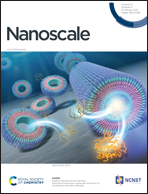Facile construction of self-supported Fe-doped Ni3S2 nanoparticle arrays for the ultralow-overpotential oxygen evolution reaction†
Abstract
Constructing high-performance and cost-effective electrocatalysts for water oxidation, particularly for overall water splitting, is extremely needed, whereas still challenging. Herein, based on an economical and facile one-step surface sulfurization strategy, a three-dimensional nanostructure with uniform Fe-doped Ni3S2 nanoparticle arrays tightly implanted on nickel foam (Fe-doped Ni3S2–NF) has been fabricated for the extremely efficient electrochemical oxygen evolution reaction (OER). Owing to the unique electronic structure modulation between Ni and Fe sites, and high interfacial charge communication during the electrocatalytic process, the optimal Fe-doped Ni3S2–NF electrode shows an excellent OER activity with ultralow overpotentials of 166 and 235 mV at 10 and 100 mA cm−2 in alkaline solution, respectively, remarkably outcompeting the benchmark RuO2/NF and the overwhelming majority of the reported electrocatalysts. Furthermore, for overall water splitting, the Fe-doped Ni3S2–NF electrode as a bifunctional electrocatalyst assembled in a two-electrode device requires merely 1.56 V to gain a current density of 10 mA cm−2. This study presents a universal surface engineering strategy to conveniently and economically remould commercial metal materials into efficient electrocatalysts for various electrochemical reactions.



 Please wait while we load your content...
Please wait while we load your content...